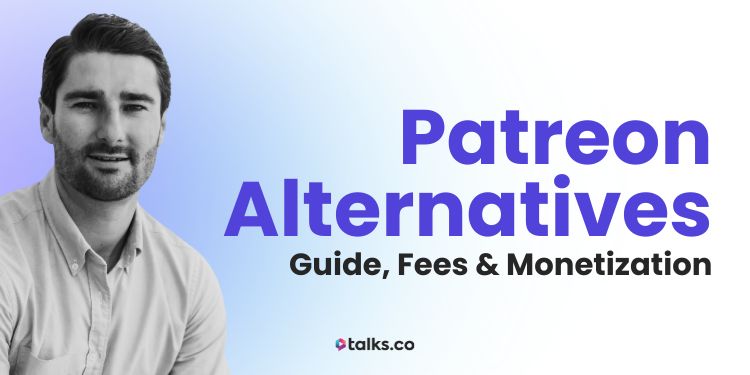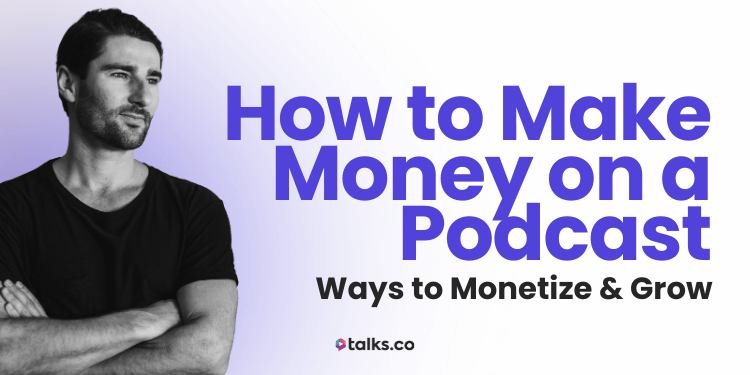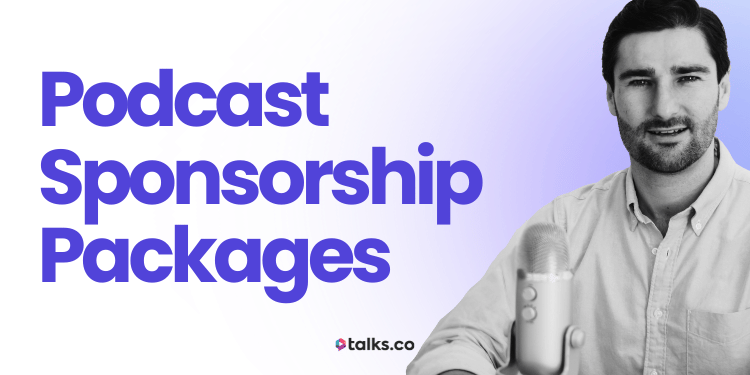Feel like Patreon should be working better… but it’s just not?
You’re putting out good content. Maybe you’ve got a podcast, an audience, or clients who’d happily support your work but the setup feels complicated, limited, or just off.
Patreon’s popular, sure. But it’s not always the right fit.
That’s why I pulled together this list of top Patreon alternatives for you, whether you’re a coach, content creator, author, speaker, or podcaster who wants to build a paid community or get steady support.
I’ve covered pricing, features, pros and cons, and how easy each one is to use plus who each is best for.
Some are great for podcasts. Some help creators with behind-the-scenes content or live sessions. Others just give you more control or better support.
The point is: you’ve got options. Let’s find the one that fits.
Best Patreon Alternatives at a Glance
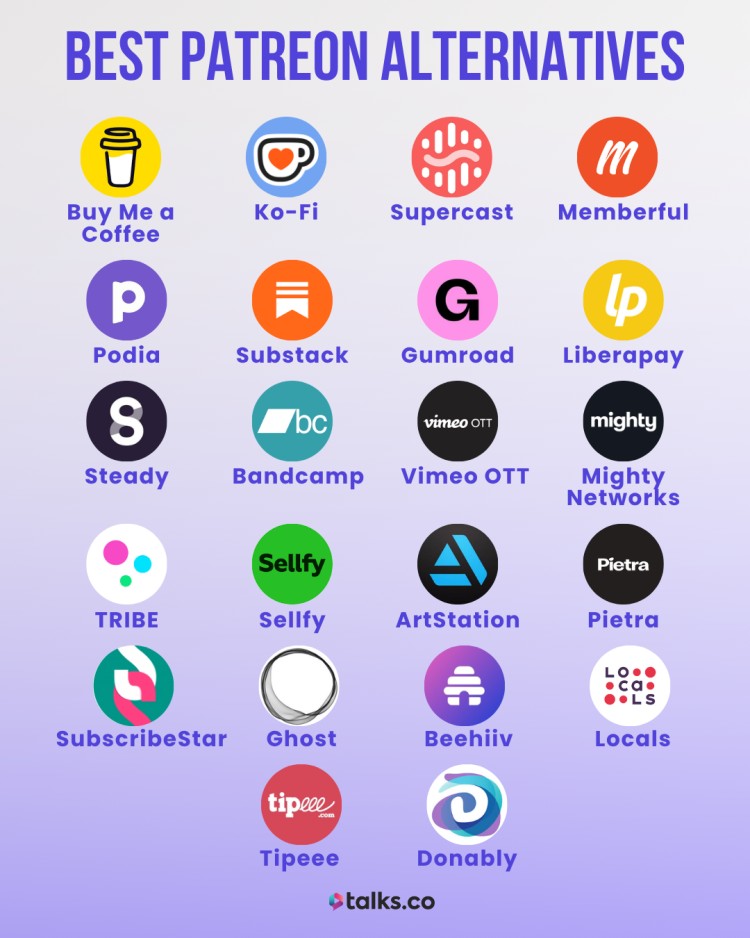
Looking to get paid for your creative work but want something different from Patreon?
These platforms cover a bunch of needs, from selling products and running memberships to building communities and getting tips.
Here’s a quick rundown of the best Patreon alternatives, with what each one’s best at.
- Best for quick setup and easy income: Buy Me a Coffee
- Best for no fees and simple support: Ko-fi
- Best for podcasters with paid subscriptions: Supercast
- Best for full control and custom branding: Memberful
- Best for selling courses and products: Podia
- Best for paid newsletters and podcasts: Substack
- Best for selling digital products without monthly fees: Gumroad
- Best for fee-free recurring donations: Liberapay
- Best for easy paid memberships: Steady
- Best for musicians selling merch and music: Bandcamp
- Best for branded video subscriptions: Vimeo OTT
- Best for communities with courses: Mighty Networks
- Best for influencer brand deals: TRIBE
- Best for digital and physical product sales: Sellfy
- Best for digital and 3D artists: ArtStation
- Best for AI-powered sourcing and fulfillment: Pietra
- Best for flexible artist subscriptions: SubscribeStar
- Best for full control over membership sites: Ghost
- Best for newsletter growth and monetization: Beehiiv
- Best for paid gated communities: Locals
- Best for simple tipping, great for EU creators: Tipeee
- Best for flat-fee donations: Donably
What is Patreon?
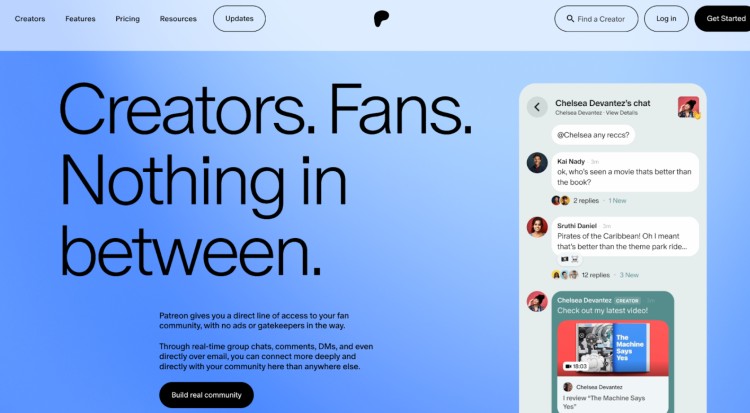
Patreon helps creators earn directly from their audience through paid memberships and digital products. It gives you a content hub, built-in shop, subscriber tools, and analytics all in one place.
It works well for creators who want steady income without relying on social media platforms or brand deals.
Patreon payment options
Creators can make money in two main ways:
- Paid memberships: Charge monthly or annually and offer perks like bonus content, live Q&As, templates, or early access.
- Digital product sales: Skip subscriptions and sell one-off downloads like videos, guides, or exclusive audio.
Fans can pay by card, PayPal, or Venmo (U.S. only). Patreon auto-adjusts pricing by currency, which helps if your audience is global.
Patreon payout options
Patreon handles payment processing and offers a few ways to get paid:
- Payout methods: Choose PayPal, Payoneer, or direct bank transfer.
- Timing: Get paid monthly or request on-demand payouts (with some limits).
- Security: Built-in fraud checks and auto-retries for failed payments help reduce missed income.
They also give you basic sales and earnings reports but you’ll pay for the convenience.
Between platform fees, payment processor cuts, and add-ons, many creators start looking for platforms that take less and let them keep more.
22 Best Alternatives to Patreon
Patreon is a great platform, but it’s not the only game in town.
Plenty of other tools can help podcasters and creators get paid and build a community without the hassle or fees Patreon brings.
Whether you want something simpler, cheaper, or with a different feature set, there’s something here for you.
1. What is better than Patreon? (Talks top pick)
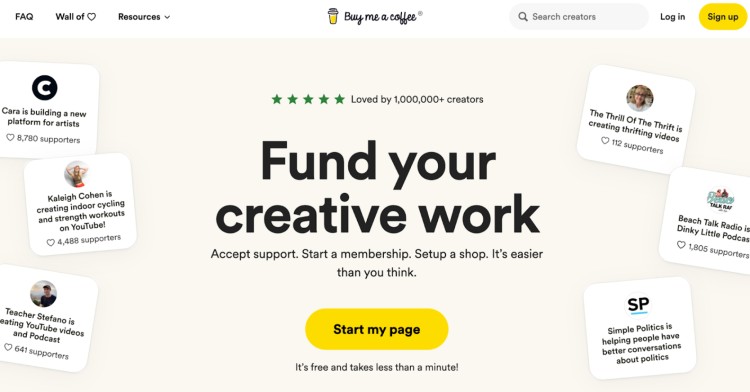
Best for: Creators who want quick setup, flexible income streams, and fast payouts.
Buy Me a Coffee is one of the best Patreon alternatives for content creators.
It lets you earn through one-off tips, recurring memberships, or selling digital products all without making your audience create an account. Whether you’re a coach selling a workbook or a musician sharing demos, Buy Me a Coffee is a great way for creators to sell and start earning right away.
- Cost: Free to get started
- Fees: 0% platform fee (standard Stripe or PayPal fees apply)
- Income options: Tips, memberships, digital shop
Pros:
- Fans can support creators without signing up.
- Instant payouts to your Stripe or PayPal.
- Built-in shop for downloads and services.
Cons:
- Basic community features.
- Not built for managing large membership programs.
2. Ko-fi
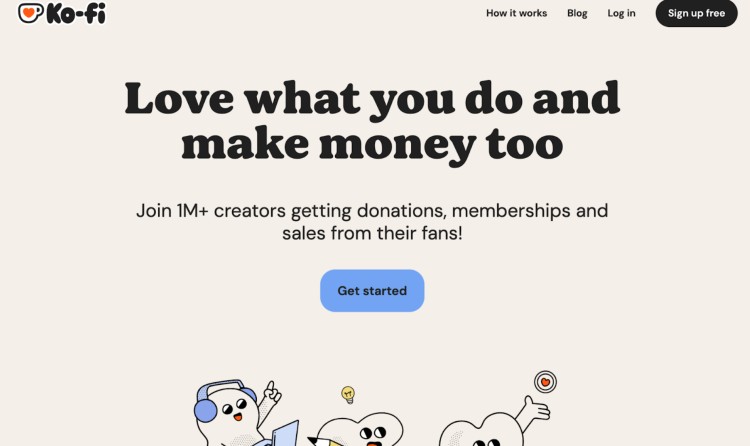
Best for: Creators who want easy, no-fee ways to accept support and offer memberships.
Ko-fi is another platform similar to Patreon that lets you earn through tips, memberships, and digital product sales. On the free plan, you keep 100% of what you make (minus payment processing), with payouts going straight to your PayPal or Stripe.
- Cost: Free, with optional upgrades
- Fees: 0% platform fee on the free plan (payment processor fees still apply)
- Income options: One-time donations, monthly or yearly memberships, digital shop
Pros:
- Instant payouts.
- Ko-fi doesn’t charge a fee unless you earn.
- Easy setup for creators to earn.
Cons:
- Advanced features require a paid plan.
- Smaller creator community compared to Patreon.
Can’t decide? My full breakdown on Kofi vs Buy Me a Coffee can help.
3. Supercast
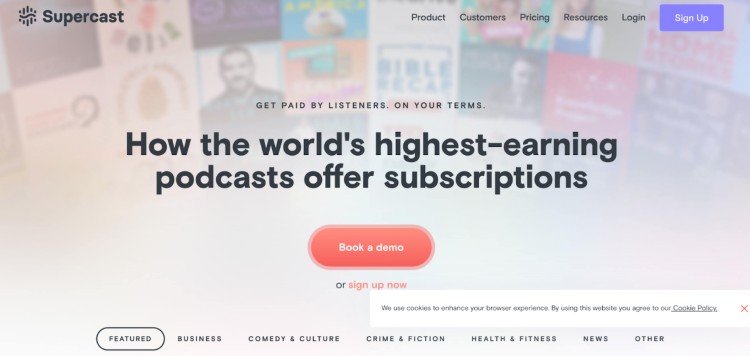
Best for: Podcasters offering premium content and recurring paid subscriptions.
Supercast is built for turning listeners into paying supporters with bonus episodes, early access, and ad-free feeds delivered through a smooth, two-tap sign-up flow that works on podcast content distribution across all major podcast apps.
- Cost: Free to join
- Platform fees: $0.59/month per subscriber (plus Stripe fees: 2.9% + $0.30 per transaction, and 0.7% per recurring charge); 15% + Stripe fees for one-time payments
- Membership options: Monthly, annual, lifetime, or one-time subscriptions (all fully customizable)
Pros:
- Works with Spotify, Apple Podcasts, Overcast, and more.
- You own your subscriber list and payments.
- Clean, branded landing pages.
Cons:
- No built-in tools for product sales or digital downloads.
- Per-subscriber fees can add up at scale.
4. Memberful
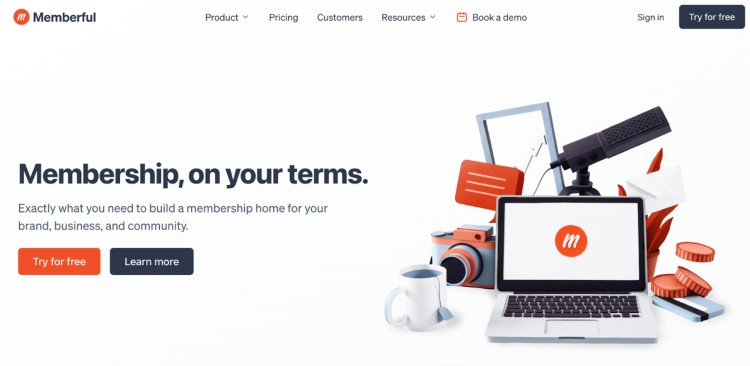
Best for: Creators who want full control over branding, pricing, and member data.
Memberful gives you the tools to run paid memberships for podcasts, courses, newsletters, and more. Use it with your own site or go live quickly using their hosted pages. You keep ownership of your audience and full control.
- Cost: $49/month
- Fees: 4.9% per transaction (plus Stripe fees: ~2.9% + $0.30)
- Income options: Monthly, annual, one-time, group plans, and trials
Pros:
- Full control over checkout, emails, and branding.
- Works with any site or hosted on Memberful.
- Supports 130+ currencies and referral tools.
Cons:
- $49/month flat fee, even before you earn.
- No built-in discovery or promotional tools.
5. Podia
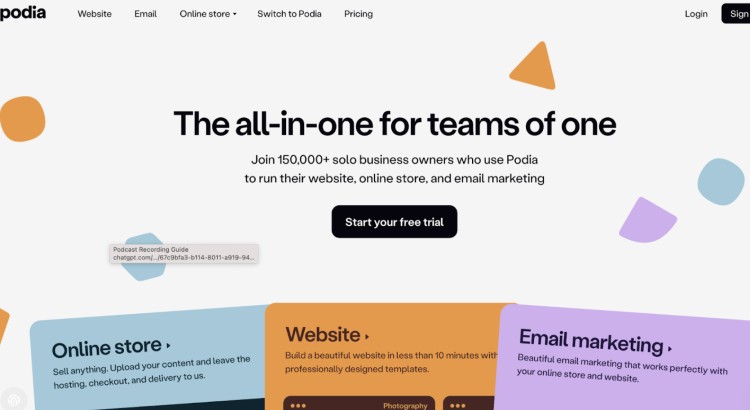
Best for: Solo creators who want to manage their site, store, and email all in one place.
Podia lets you sell courses, downloads, memberships, coaching, and more (no plugins needed). Just sign up, customize, and launch everything from one dashboard.
- Cost: Mover $39/month (5% fee), Shaker $89/month (0% fee); email is free under 100 subscribers
- Fees: 5% (Mover) or 0% (Shaker) + Stripe/PayPal fees
- Income options: Monthly, one-time, bundles, upsells, waitlists
Pros:
- All-in-one platform: site, email, checkout, products.
- Built-in email automation and affiliate tools.
- Free migration and 7-day support.
Cons:
- Email and PayPal limited on lower plans.
- Not ideal for complex teams or workflows.
6. Substack
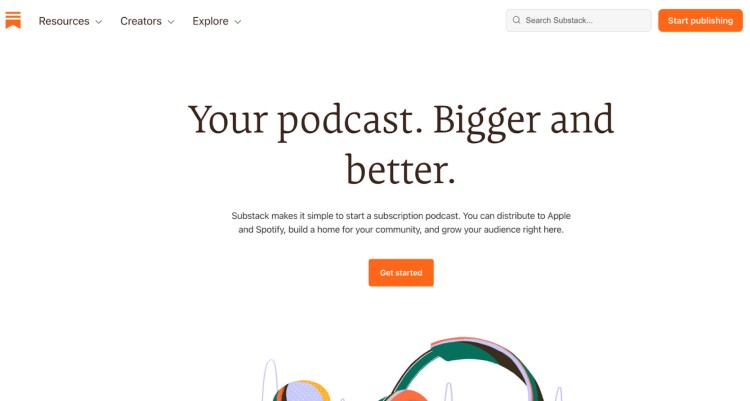
Best for: Creators building both a paid podcast and newsletter in one place.
Substack lets you publish free or paid podcast episodes, grow your email list, and run a community. Your content goes out to Spotify, Apple, and more with one-click upgrades for listeners.
- Cost: Free to host
- Fees: 10% of paid subscriptions + Stripe fees
- Income options: Free and paid episodes, monthly or annual plans
Pros:
- You own your email list and payments.
- Auto-publishes to major podcast apps.
- Built-in tools for audio, posts, and community.
Cons:
- No advanced editing or monetization tools.
- Limited branding and design flexibility.
- 10% fee can get steep as you grow.
7. Gumroad
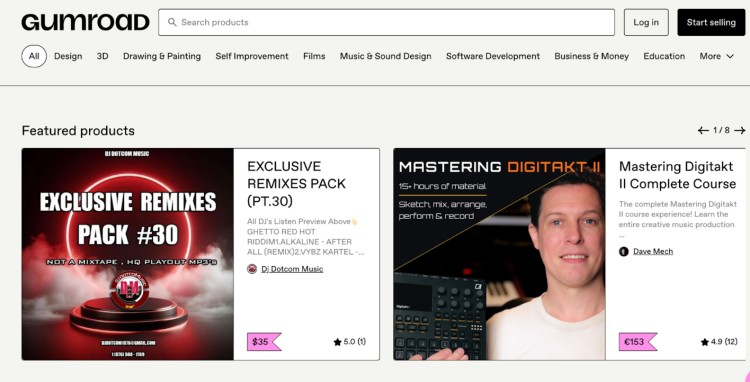
Best for: Creators who want to sell digital products and memberships with no monthly cost.
Gumroad makes it simple to sell anything digital, from ebooks and courses to art, audio, and memberships. Share your link or embed it on your site. No storefront needed.
- Cost: Free to use
- Fees: 10% + $0.50 per sale (your link); 30% via Gumroad Discover
- Income options: One-time products, subscriptions, memberships
Pros:
- No monthly fees; pay only when you earn.
- Sales tax handled globally.
- Supports both one-offs and recurring payments.
Cons:
- 30% fee on marketplace sales.
- Limited design options.
- Not built for podcast delivery.
8. Liberapay
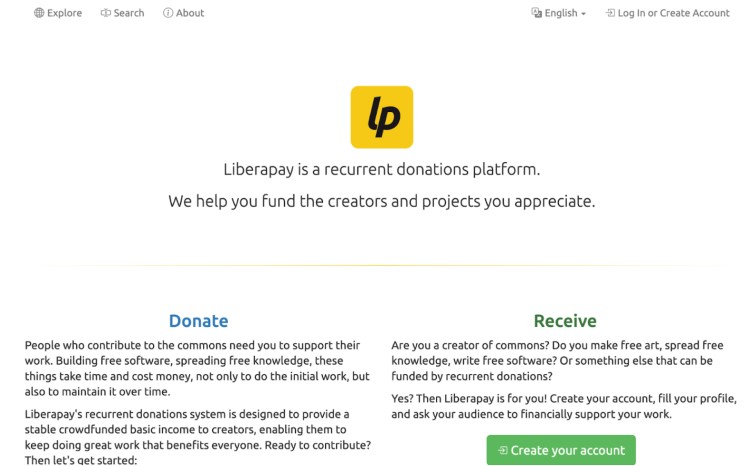
Best for: Creators who want recurring donations with no platform fees or strings attached.
Liberapay lets you collect ongoing donations to fund free software, art, knowledge, and other commons projects. It’s non-profit and open source.
- Cost: Free to use
- Fees: Only payment processing (Stripe ~3.1%, PayPal ~5.1%)
- Income options: Recurring weekly donations (no one-time payments)
Pros:
- No platform cut; 100% goes to you.
- Supports 29+ languages and multiple currencies.
- Teams can share donations without a formal business.
Cons:
- Recurring donations only.
- No perks, rewards, or one-off gifts.
- Donation limits: $0.01-$100/week.
9. Steady
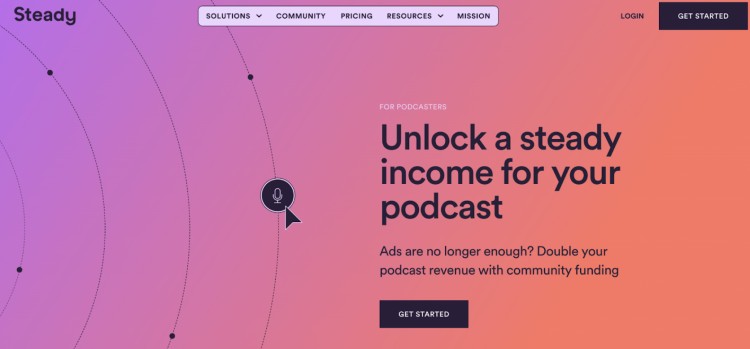
Best for: Podcasters, writers, and creators who want hassle-free memberships with zero upfront cost.
Steady lets you launch a paid membership in minutes. Offer bonus content, community access, or merch without managing tech, taxes, or billing.
- Cost: Free to start
- Fees: 10% of revenue after you earn + 1%-3% processing fees
- Payouts: Monthly via PayPal, with detailed breakdowns
Pros:
- Handles VAT, billing, and failed payments for you.
- Accepts PayPal, Apple Pay, credit cards, and more.
- No need for a Stripe account.
Cons:
- 10% platform fee + payment fees can stack.
- No one-time payment options.
- High chargeback fees (€3.50-€30).
Patreon Alternatives for Artists
If you’re an artist looking for better ways to sell, share, and earn from your work, these Patreon alternatives offer more flexibility, control, or lower fees depending on what you need.
10. Bandcamp
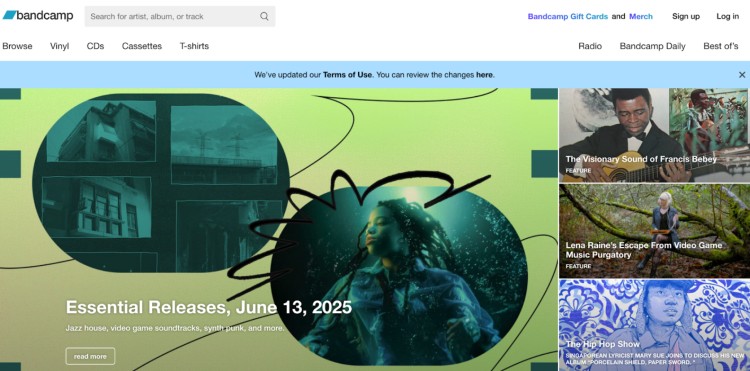
Best for: Musicians selling music and merchandise directly to fans while tapping into a discovery-driven community.
Bandcamp lets you sell music, merchandise, and memberships with flexible pricing and full control over payouts. Its recommendation features and fan collections help boost exposure and sales. Merch sales count toward chart reporting, and fans can pay what they want.
- Cost: Free to join
- Fees: Digital: 15% (drops to 10% after $5K/year); Physical: 10%; Processing: 4-6% (Stripe/PayPal); Optional 11% collection society fee
- Payouts: Fast via PayPal, or monthly batch on request
- Income options: Pay-what-you-want, subscriptions, merchandise bundles, one-time sales
Pros:
- Active music community and discovery tools.
- Merch sales tools and chart reporting.
- Instant payouts and full data ownership.
Cons:
- Higher fees until $5K in sales.
- Limited customization.
- Focused on music, not ideal for other creator types.
11. Vimeo OTT
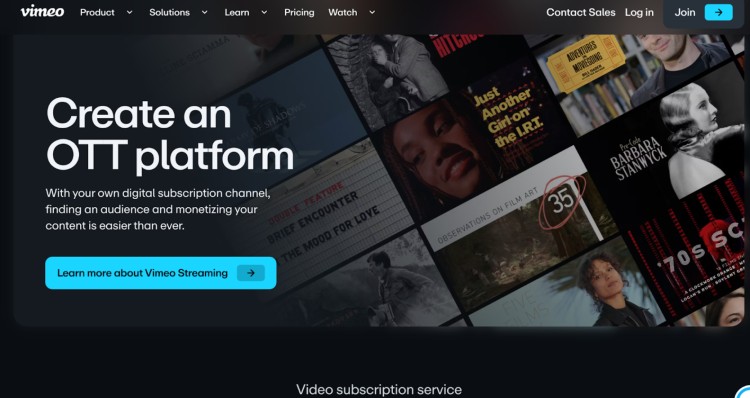
Best for: Creators and businesses launching branded subscription or transactional video platforms.
Vimeo OTT lets you stream live and on-demand video across web, mobile, and smart TVs. You can monetize your podcast with subscriptions, pay-per-view, ads, or free trials, while Vimeo handles all the tech and platform management.
- Cost: Starter plan from $1 per subscriber/month
- Fees: 10% on one-time purchases; Enterprise pricing custom
- Payouts: Monthly via Stripe Connect
- Income options: Subscriptions (SVOD), transactions (TVOD), advertising (AVOD), free trials (FVOD), live pay-per-view (PPV)
Pros:
- Multi-device streaming (web, mobile, smart TVs).
- Flexible monetization models.
- Built-in marketing tools and analytics.
- 24/7 support and dedicated account managers on Enterprise.
Cons:
- Starter plan limited to web only.
- Enterprise pricing not transparent.
- Stripe payout timing can vary.
12. Mighty Networks
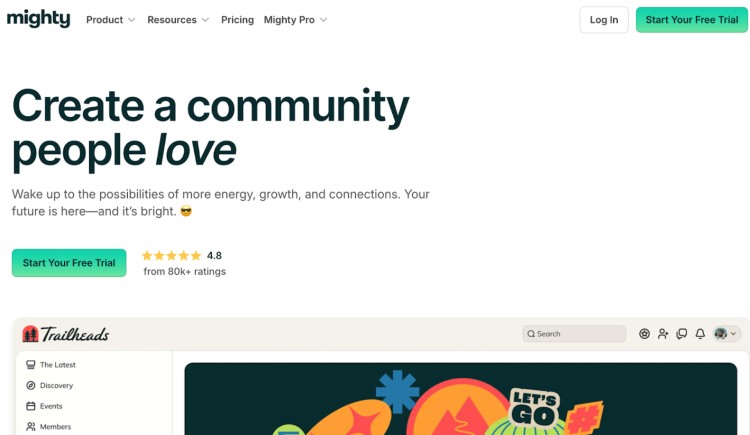
Best for: Creators and businesses building branded online communities with courses and events.
Mighty Networks combines community, content, and connection in one platform. It offers courses, challenges, livestreaming, gamification, and AI tools to boost member engagement and growth.
- Cost: Community Plan $49/month; Courses Plan $119/month; Business Plan $219/month; Growth Plan $430/month
- Fees: No platform fees; standard Stripe/PayPal fees (~2.9% + 30 cents per transaction) apply.
- Payouts: Via payment processor, usually within a few business days.
Pros:
- All-in-one community, courses, and events platform.
- Built-in livestreaming and gamification.
- AI-powered member matchmaking.
- No extra fees for admins or spaces.
Cons:
- Pricing can add up for larger communities.
- Advanced features may require time to learn.
- No free plan, only free trial.
13. TRIBE
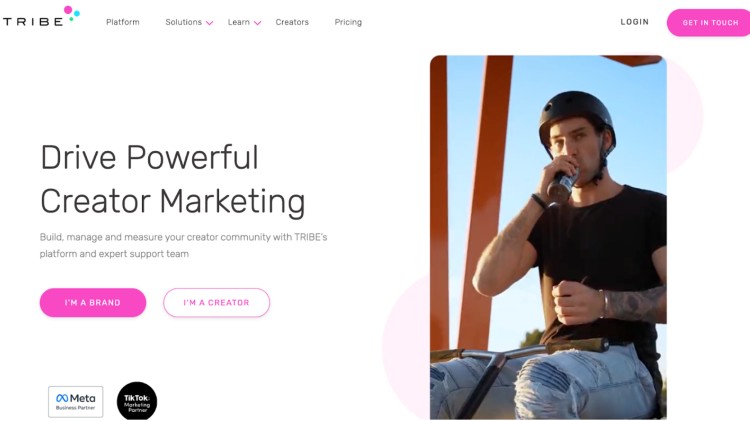
Best for: Instagram and TikTok creators monetizing brand campaigns.
TRIBE connects creators with brands, letting you pitch ideas, set your fees, and get paid directly. Brands choose self-service or full support (TRIBE Plus).
- Cost: Free for creators
- Fees: No fees for creators; brands pay annual fees plus margins
- Payouts: Paid directly by brands; timing varies
Pros:
- Thousands of campaigns to choose from.
- Creators control their rates.
- Easy app for pitching and managing work.
- Optional full-service support for brands.
Cons:
- Requires 3,000+ followers.
- Income depends on campaigns and rates.
- Focuses on content creation, not community building.
14. Sellfy
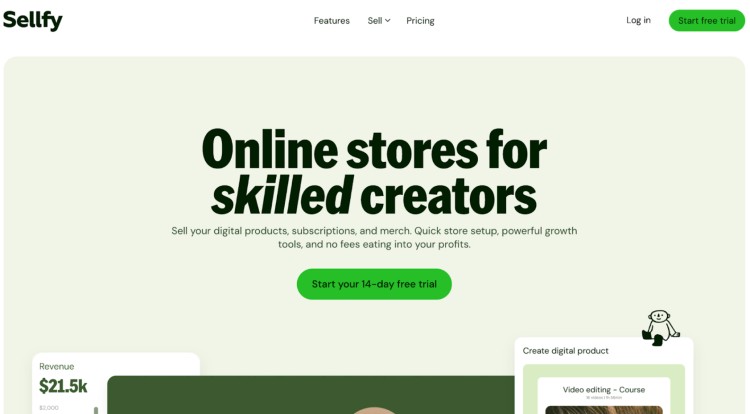
Best for: Creators and small businesses selling digital, physical, subscriptions, and print-on-demand products.
Sellfy lets you build a branded online store fast. Sell ebooks, merch, subscriptions, and print-on-demand with no transaction fees. Includes email marketing, upsells, cart recovery, and affiliate tools.
- Cost: From $22/month (up to $10k sales/year)
- Fees: None
- Payouts: Via PayPal or Stripe
Pros:
- Built-in marketing tools.
- Embed products/store anywhere.
- Secure payments and PDF stamping.
Cons:
- Sales caps per plan.
- Advanced features need higher tiers.
- No marketplace for discoverability.
15. ArtStation
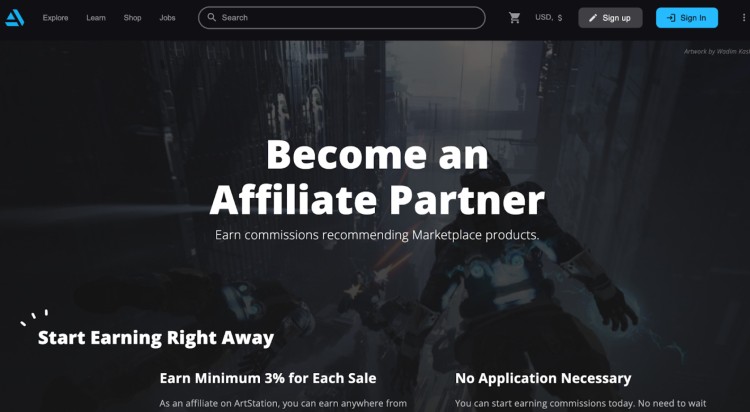
Best for: Digital and 3D artists selling prints, assets, or tutorials.
ArtStation is a popular platform for artists to sell prints, digital downloads, and tutorials, while also showcasing their portfolio to potential clients or employers. It includes a “Marketplace” and a “Learning” section, with monetization options that don’t rely on subscriptions.
- Cost: Free; $9.95/month for Pro
- Fees: 12% on sales (5% with Pro) + $0.30 transaction fee
- Payouts: PayPal, processed manually
Pros:
- Built-in marketplace and portfolio.
- Low selling fees with Pro.
Cons:
- Limited community/membership tools.
16. Pietra
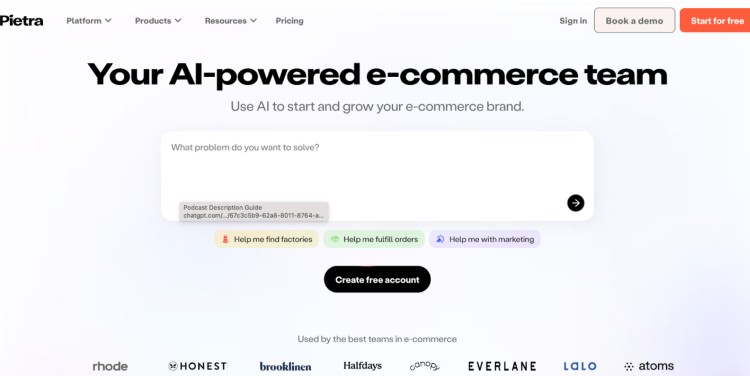
Best for: Brands wanting AI-powered sourcing, fulfillment, and marketing in one platform.
Pietra connects you to 1,300+ vetted factories, offers affordable fulfillment ($1.15/order), and includes marketing tools like TikTok Shop and retail distribution, all managed with AI support.
- Cost: Essentials: $99/month ($49/month yearly); Business: $199/month ($99/month yearly); Plus: Custom
- Fees: $1.50/order Essentials, $1.15/order Business; Storefront fee: 2% Essentials, 1% Business and Plus
- Payouts: 1% cash back on sourcing and production
Pros:
- Direct factory access with low minimums.
- Affordable fulfillment with live support.
- Built-in marketing and storefront tools.
Cons:
- Plus plan pricing is custom.
- Focused on physical products.
17. SubscribeStar
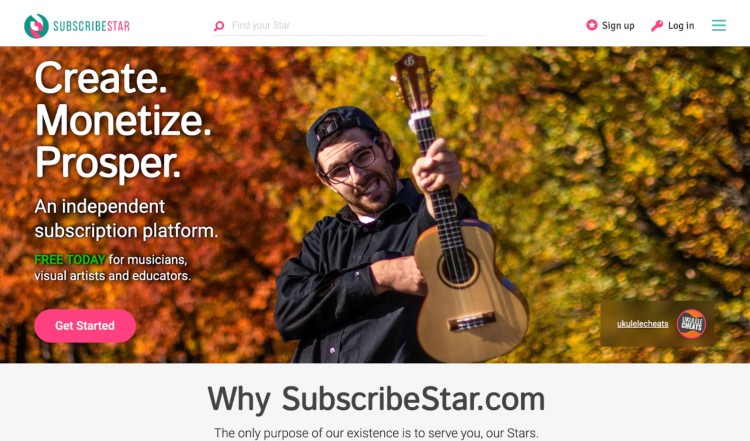
Best for: Artists who want flexible subscriptions and fewer restrictions.
SubscribeStar offers tiered subscriptions, anti-scraping features, direct messaging, and detailed analytics. It handles VAT and supports multiple payout options.
- Cost: No start-up fees; subscription fee set by creators (up to $100/month)
- Fees: 5% service fee + 2.9% + $0.30 payment processing (3.5% + $0.30 for payments over $30)
- Payouts: Monthly via bank or eWallet (minimum $150)
- Income options: Subscription tiers, paid collections, commissions
Pros:
- Flexible tiers.
- Strong security tools.
- Detailed analytics.
- Multiple payout options.
Cons:
- Minimum $150 payout.
- Payouts can take up to 14 business days.
- Combined service and processing fees.
Patreon Alternatives for Writers
Writers don’t just need a place to publish; they need a place to get paid for it.
These Patreon alternatives are built for creators who want to share their words, grow a loyal following, and earn on their own terms, without getting lost in the algorithm.
18. Ghost
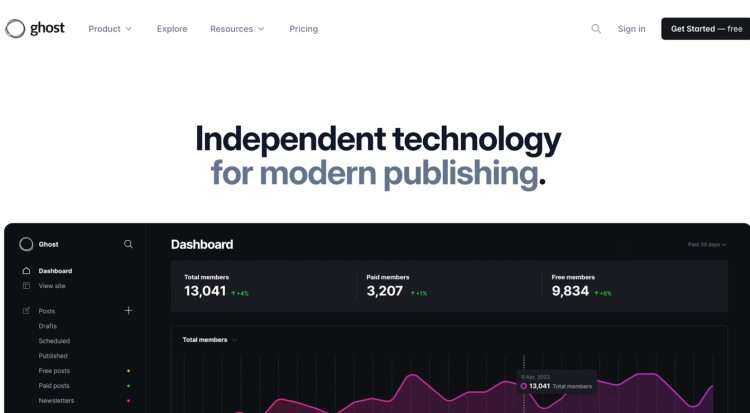
Best for: Creators wanting full control and zero fees on a customizable membership site.
Ghost is an open-source platform for membership publishing. It offers clean writing tools, full ownership of content and subscribers, built-in newsletters, and SEO, all with no transaction fees.
- Cost: From $11/month (up to 500 members) to $249/month (10,000 members)
- Fees: 0% transaction fees
- Payouts: Via Stripe
- Income options: Paid subscriptions, free and paid member tiers
Pros:
- Full content and subscriber ownership.
- Custom domains and branding.
- Easy Patreon migration.
Cons:
- Pricing scales with audience size.
- No built-in audience marketplace.
19. Beehiiv
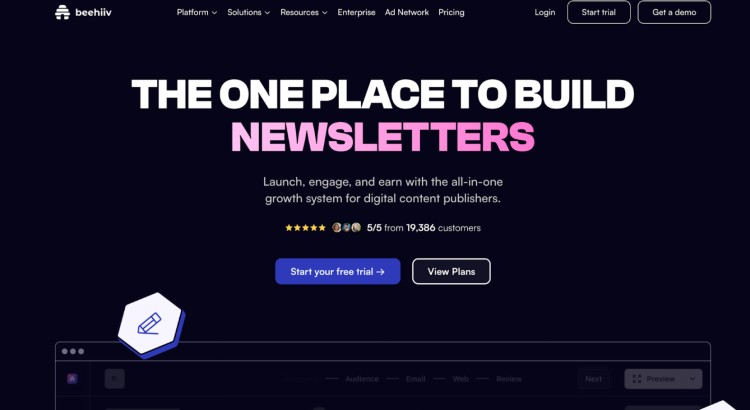
Best for: Newsletter creators wanting easy growth tools and flexible monetization.
Beehiiv offers a newsletter platform with custom websites, unlimited email sends, and audience segmentation. It supports paid subscriptions, ad network monetization, referral programs, and AI-powered features to grow and engage your audience.
- Cost: Free plan up to 2,500 subscribers; paid plans from $49 to $109+/month
- Fees: No transaction fees
- Payouts: Via Stripe (built-in subscriptions)
- Income options: Paid subscriptions, ads, referral boosts
Pros:
- Built-in growth and referral tools.
- Flexible plans with scaling options.
Cons:
- Subscriber limits on free and lower plans.
- Advanced features only on higher-priced tiers.
20. Locals
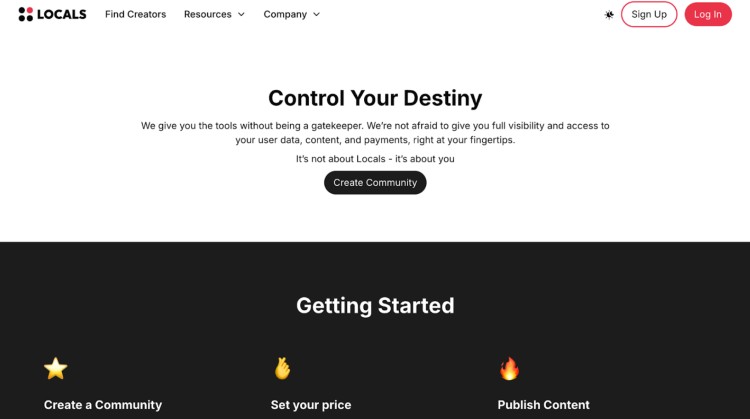
Best for: Writers building a gated, paid community with direct audience access.
Locals lets you create a membership community with paywalled posts, livestreams, tipping, and email tools. It’s designed for creators who want to engage without algorithms or ads, while keeping control over their content and income.
- Cost: Free to start
- Fees: 10-20% platform fee (plus Stripe fees: ~2.9% + $0.30)
- Income options: Monthly, annual, one-time, tips, and coins
Pros:
- Paywalled content, livestreams, and emails in one platform.
- No monthly cost until you earn.
- Tiered features expand as you grow.
Cons:
- Up to 30% fee on in-app purchases.
- Limited visibility and no discovery tools.
- Usage limits until you reach higher tiers.
21. Tipeee
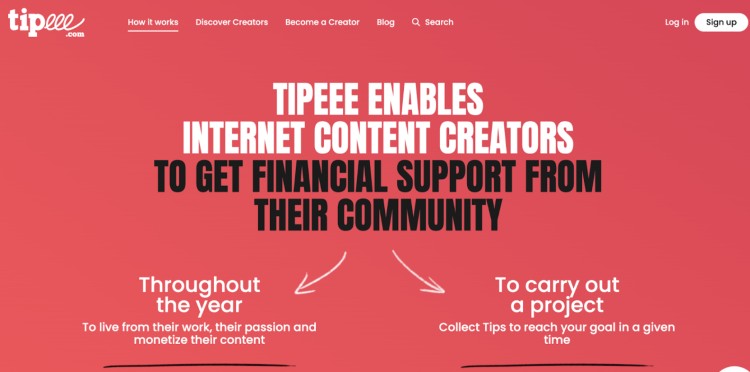
Best for: European creators looking for simple, tip-based support without paywalls.
Tipeee is a tip jar platform for creators who want ongoing or one-time support from their audience, no subscriptions or locked content required. It’s easy to set up, open to all types of creators, and available globally.
- Cost: Free to join
- Fees: 8% platform fee (plus payment processor fees)
- Income options: One-time tips, recurring monthly support, optional rewards
Pros:
- Low fees and no upfront costs.
- Simple setup with no content restrictions.
- Great for EU-based creators and small audiences.
Cons:
- Limited tools and analytics.
- Mostly used in French-speaking regions.
22. Donably
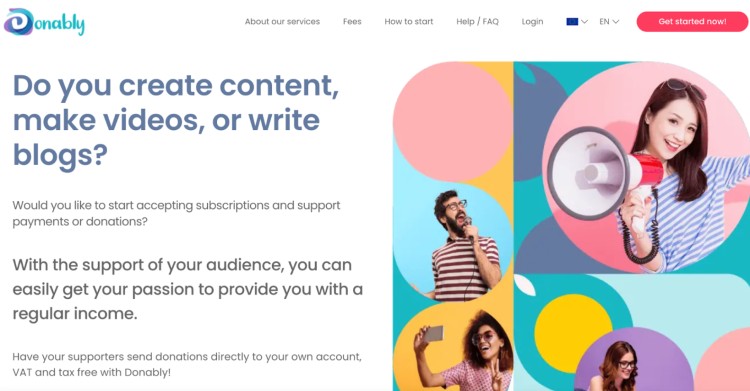
Best for: Creators and nonprofits looking for a flat-fee, all-in-one donation platform.
Donably lets creators collect recurring and one-time donations. It includes built-in paywall tools, invoicing, supporter contact, and analytics, all bundled into a single fee that covers both platform and processing costs.
- Cost: Free to join
- Fees: 10% flat fee (includes platform + payment processing)
- Income options: One-time donations, recurring support, exclusive content
Pros:
- No transaction or monthly fees.
- Paywall and supporter messaging tools.
Cons:
- Still rolling out features like Apple Pay and marketing tools.
- Primarily used in Europe.
How to Choose the Best Patreon Alternative Platform for You
Not every creator needs the same setup. Here are seven things to help you figure out which top podcast monetization platforms will work best for you based on how you create, earn, and grow your podcast.
- Know your content type. Some platforms are built for video, others for writing, podcasting, or courses. Choose a type of podcast that fits how you share your work.
- Decide how you want to earn. Want recurring income? One-off tips? Product sales? Look for a platform that matches how you plan to make money.
- Check the fee structure. Platform fees, transaction cuts, app store deductions; some take more than others. Know exactly what you’re giving up before you commit.
- See where your audience is. If your fans already use Substack or Ko-fi, it might be easier to grow there. A podcasting 101 secret? Go where your people already are.
- Think about discoverability. Some tools help you get found by new fans. Others rely on you to bring the traffic. Decide if you need help with reach or prefer full control.
- Test the creator experience. You’ll be using this platform daily, posting, managing supporters, sending updates. It should feel easy and intuitive, not like extra admin work.
- Own your audience. The best platforms let you access your supporter emails and data. Avoid platforms that keep you locked out of your own list.
What to look for in a Patreon alternative
There are tons of options out there but these are the features worth paying attention to when you’re looking for a Patreon alternative for creators.
- Custom branding options: Can you make it feel like your space, with your logo, colors, and voice?
- Flexible payment models: Look for monthly, annual, one-time payments, and tipping options.
- Low platform fees: Ideally under 10%, or only charged when you actually earn to make it easy for creators to make money.
- Reliable payouts: Payments should be timely and transparent; no mystery delays or hidden deductions.
- Supporter data access: You should be able to see your supporters’ emails and contact info when picking alternative platforms like Patreon.
- Content hosting: Some platforms let you upload videos, podcasts, PDFs, or bonus posts directly.
- Community tools: Comments, livestreams, direct messages, and email updates can help you build real connection.
- Built-in promotion: Discovery feeds, featured sections, or SEO-optimized public pages to advertise your podcast can help bring in new fans.
Your Crowd, Your Rules
Most Patreon alternatives help you collect donations. But what if you stopped chasing small tips and focused on building real visibility instead?
Getting featured on podcasts puts you in front of your ideal audience without paying for ads, posting every day, or hoping someone hits a “support” button.
If you’re a coach, expert, or creator, Talks helps you get booked on top podcasts so you can grow your audience and your authority.
Create your free Talks Creator Profile and start getting booked on podcasts that grow your reach and reputation.
